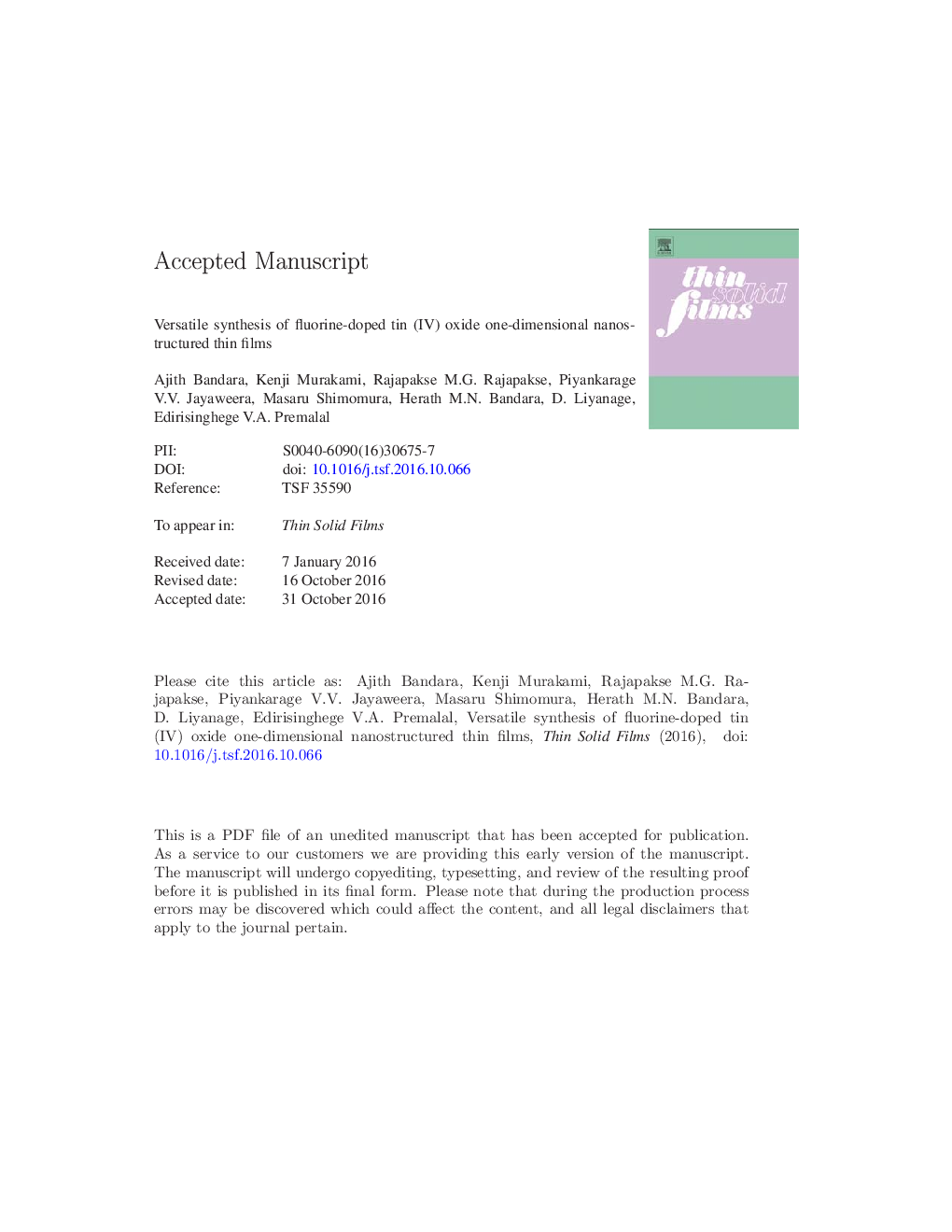| Article ID | Journal | Published Year | Pages | File Type |
|---|---|---|---|---|
| 5466401 | Thin Solid Films | 2017 | 24 Pages |
Abstract
A novel Spray Pyrolysis (SP) technique, known as Pulsed Atomized Spray Pyrolysis (PASP), was developed and deployed to prepare thin films of various nanotechnological architectures of fluorine-doped tin (IV) oxide (FTO) layers on glass surfaces. This technique allows for the perfect control of morphology of nanotechnological architectures of FTO, which can be achieved simply by controlling spray duration. As such, 0-D nanocrystallites, 1-D uncapped nanorods and 1-D capped nanorods; all in 2-D thin layers, and extensively cross-linked 3-D nanotechnological architectures of FTO can be prepared, on soda lime glass surfaces. This is the first time report on kinetically-controlled growth of different nanotechnological architectures of FTO, using the same technique. X-Ray Diffraction (XRD), Scanning Electron Microscopic (SEM) and X-Ray Photoelectron Spectroscopic (XPS) data show excellent correlations. As evident from XPS data, FTO uncapped nanorods were found to contain more Sn2Â + sites on their surfaces when compared to those of other nanotechnological architectures. ATR-FT-IR spectrum shows FSnF and FSn stretching vibrations in all forms of FTO nanostructures. Thin layers have optical transmissions in the range 70% to 85%, in the visible range of the electromagnetic spectrum. This technique is versatile and is not limited only to fabricate FTO nanostructures, but, it can also be used to fabricate thin layers of nanotechnological structures of different dimensionalities of various materials on various substrates, which is capable to withstand required pyrolytic temperatures.
Related Topics
Physical Sciences and Engineering
Materials Science
Nanotechnology
Authors
Ajith Bandara, Kenji Murakami, Rajapakse M.G. Rajapakse, Piyankarage V.V. Jayaweera, Masaru Shimomura, Herath M.N. Bandara, D. Liyanage, Edirisinghege V.A. Premalal,
